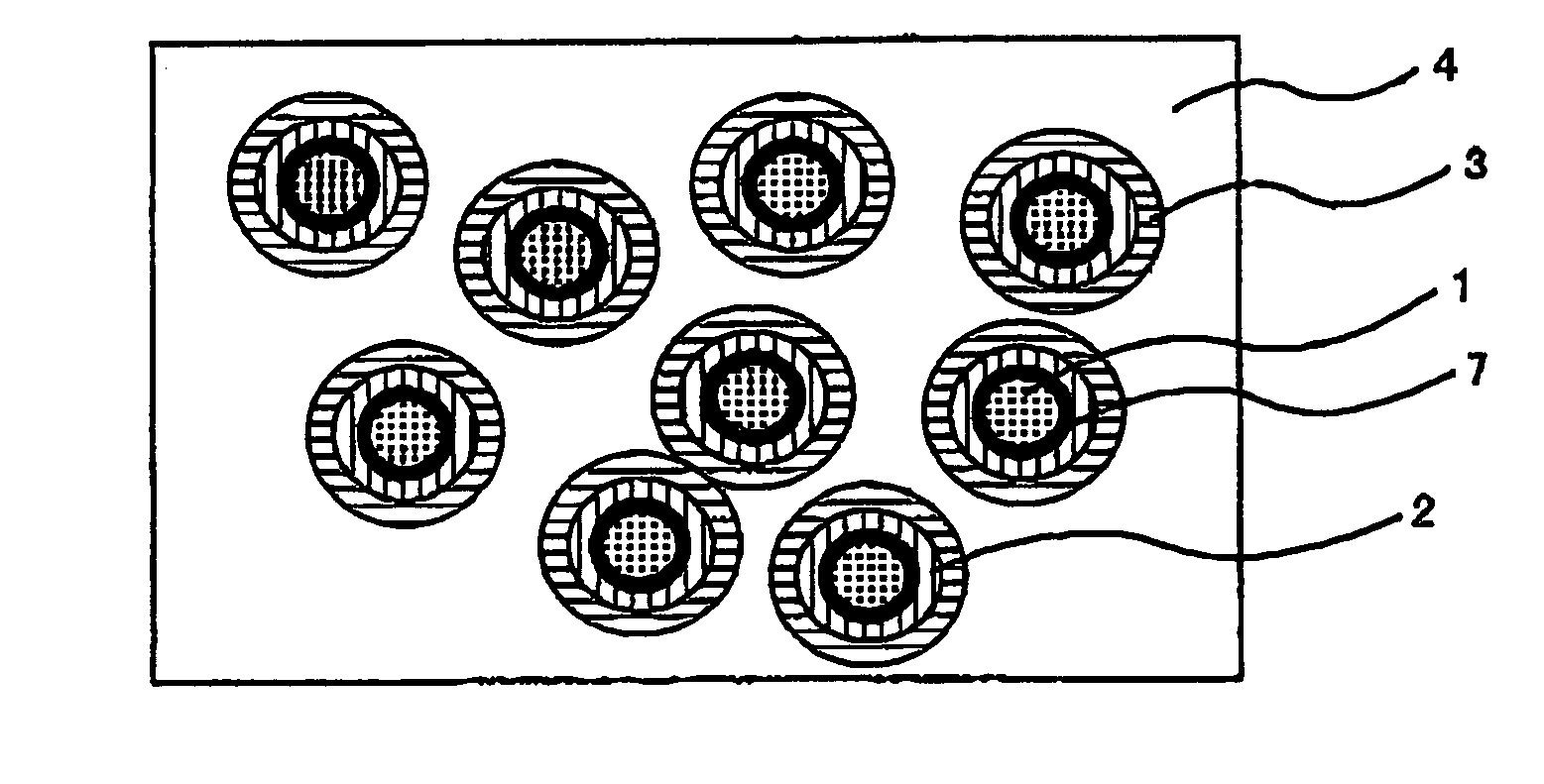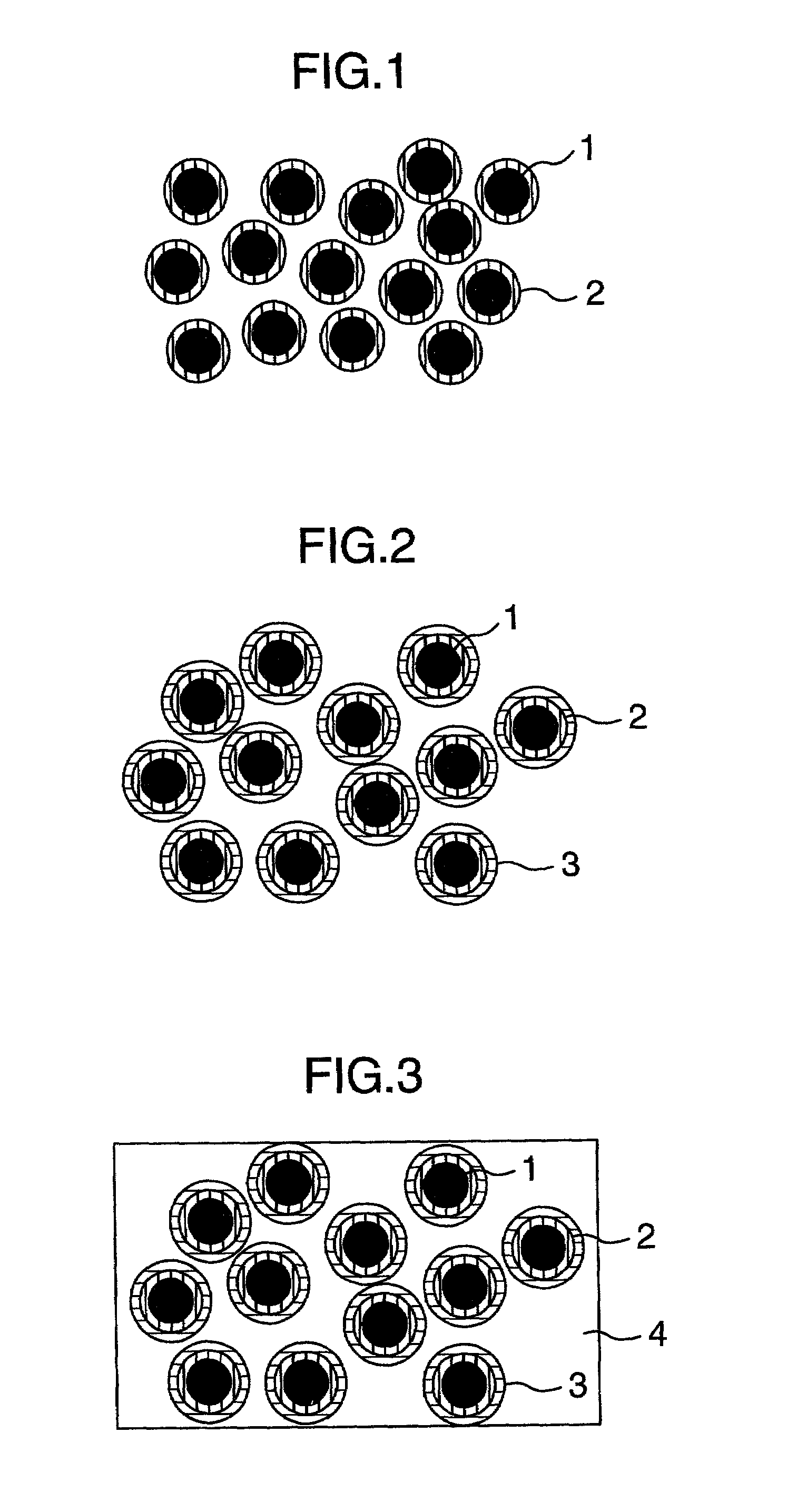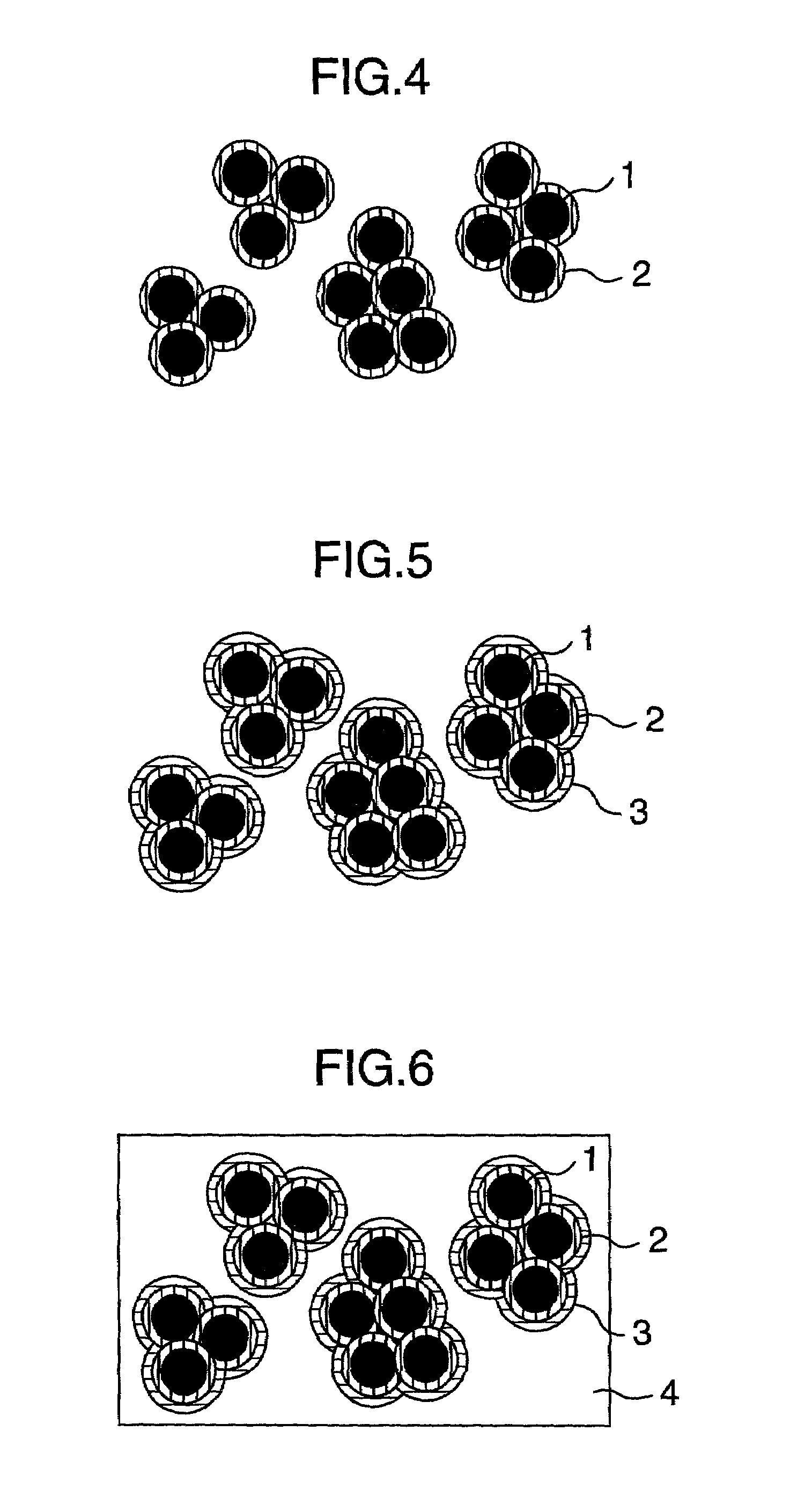High dielectric constant composite material and multilayer wiring board using the same
a composite material and high dielectric constant technology, applied in the direction of combination recording, conductive materials, record information storage, etc., can solve the problems of low heat resistance of organic substrates, inability to directly apply conventional coating and sintering techniques using metal or insulators, such as those practiced with ceramic substrates, and the difficulty of handling them. , to achieve the effect of low dielectric loss tangent and high dielectric constan
- Summary
- Abstract
- Description
- Claims
- Application Information
AI Technical Summary
Benefits of technology
Problems solved by technology
Method used
Image
Examples
example 1
[0046]A process for producing a high dielectric constant composite material according to the first embodiment of the present invention is explained below. In this Example, EP828 (produced by Yuka Shell Epoxy Co., Ltd.) was used as epoxy resin, m-phenylenediamine (produced by Wako Pure Chemical Industries, Ltd.) as epoxy resin curing agent, and 2E4MZ-CN (produced by Shikoku Chemicals Corp.) as curing accelerator. Iron powder having an average particle size of 0.5 μm was used as a starting material for the high dielectric constant composite material. For the insulation of iron powder, a phosphate-based chemical treating solution containing 0.4 mol / l of benzotriazole as rust inhibitor and 0.1% by weight of EF104 (produced by Tohchem Products Corp.) as surfactant was used. S510 (produced by Chisso Corp.) was used as surface treating solution for the insulated iron powder.[0047](1) To 1 kg of iron powder having an average particle size of 0.5 μm, 200 ml of the insulating treatment soluti...
example 2
[0054]A process for producing the high dielectric composite material according to the second embodiment of the present invention is explained below. In this Example, EP1001 (produced by Yuka Shell Epoxy Co., Ltd.) was used as epoxy resin, dicyandiamide (produced by Wako Pure Chemical Industries, Ltd.) as epoxy resin curing agent, and 2E4MZ-CN (produced by Shikoku Chemicals Corp.) as curing accelerator. Zinc powder having as average particle size of 0.5 μm was used as high dielectric constant material. For the insulation of zinc powder, a phosphate-based chemical treating solution comprising 0.4 mol / l of benzotriazole as rust inhibitor and 0.1% by weight of EF104 (produced by Tohchem Products Corp.) as surfactant was used. S510 (produced by Chisso Corp.) was used as surface treating solution for iron powder after the insulation treatment.[0055](1) To 1 kg of zinc powder having an average particle size of 0.5 μm, 200 ml of the insulation treating solution was added and the mixture was...
example 3
[0061]A process for producing the high dielectric constant composite material according to the third embodiment of the present invention is explained below. In this Example, EP806 (produced by Yuka Shell Epoxy Co., Ltd.) was used as epoxy resin, m-phenylenediamine (produced by Wako Pure Chemical Industries, Ltd.) as epoxy resin curing agent, and 2E4MZ-CN (produced by Shikoku Chemicals Corp.) as curing accelerator. A zinc powder having an average particle size of 3 μm was used as a starting material for the high dielectric constant composite material. For the insulation of the zinc powder, a phosphate-based chemical treating solution containing 0.4 mol / l. of benzotriazole as rust inhibitor and 0.1% by weight of EF104 (produced by Tohchem Products Corp.) as a surfactant was used. S510 (produced by Chisso Corp.) was used as a surface treating solution for the insulated zinc powder.[0062](1) To 1 kg of zinc powder having an average particle size of 3 μm, 200 ml of the insulating treatme...
PUM
| Property | Measurement | Unit |
|---|---|---|
| dielectric constant | aaaaa | aaaaa |
| agglomerate size | aaaaa | aaaaa |
| particle size | aaaaa | aaaaa |
Abstract
Description
Claims
Application Information
 Login to View More
Login to View More - R&D
- Intellectual Property
- Life Sciences
- Materials
- Tech Scout
- Unparalleled Data Quality
- Higher Quality Content
- 60% Fewer Hallucinations
Browse by: Latest US Patents, China's latest patents, Technical Efficacy Thesaurus, Application Domain, Technology Topic, Popular Technical Reports.
© 2025 PatSnap. All rights reserved.Legal|Privacy policy|Modern Slavery Act Transparency Statement|Sitemap|About US| Contact US: help@patsnap.com



